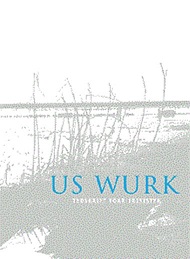'Ene zie borch tho bouwenn...' A new look at the Pan-Frisian Dike Law in light of a Low German Ommeland version
Abstract
This article concerns the Pan-Frisian Dike Law, well known as one of the articles of Frisesk Riucht in the Old Frisian and Low German manuscripts from Riustringen. Another version of that Dike Law is found--in a completely different context--in three Low German manuscripts from the Ommelanden. The historical background of the text itself is discussed first. An initial characterization of the text is made with regard to its textual environment in the Riustring tradition. Findings from research on the early history of dike building along the Frisian littoral help to establish that the text likely stems from the first half of the 13th century and was written somewhere east of the Lauwers River. An analysis of some of the imagery in the text provides corroboration for these assumptions. The text can therefore be placed within the context of the early Pan-Frisian movement in the same area and period. Based on a comparison of certainelements from both the Pan-Frisian Dike Law and the Seventeen Statutes, it seems likely that the former text may once have functioned as a narrative embellishment to an earlier, regional version of the 10th Statute.
In the second half of this article, the hitherto unpublished recensions of the Low
German Ommeland translation of the Pan-Frisian Dike Law are introduced and
subsequently aligned and compared with both the Low German Riustring translation and the Old Frisian recension of the text found in R1. Differences in style between the Low German Riustring (paraphrastic) and Ommeland (literal, form-based) translations lead us to establish that the latter translation represents an Old Frisian original which is independent from that represented by both the Old Frisian and Low German recensions from Riustringen. This in turn makes it possible to call into question the traditional interpretations of some passages in the text which have been based, until now, solely on the Riustring sources.

